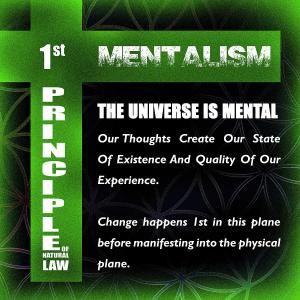Anton Anthony's Application of the Principles of Hermetism in Education: Cultivating Holistic Learning
Anton Anthony's Application of the Principles of Hermetism in Education: Cultivating Holistic Learning
ATLANTA, GEORGIA, UNITED STATES, May 23, 2023/EINPresswire.com/ -- Education is pivotal in shaping individuals' intellectual, emotional, and spiritual development. To create a comprehensive and meaningful educational experience, drawing inspiration from various philosophical traditions can be beneficial. One such tradition is Hermetism, which offers timeless principles that can be applied in education. This article explores how the seven principles of Hermetism can be integrated into educational practices to foster holistic learning and personal growth.
Mentalism: Harnessing the Power of the Mind: The principle of mentalism highlights the influence of the mind on learning. Students should be encouraged to develop a positive mindset, visualize success, and cultivate belief in their abilities. By teaching students about the power of their thoughts, educators can foster resilience, self-confidence, and a growth mindset (Dweck, 2006). Research on the impact of mindset on academic achievement supports the value of this principle (Blackwell et al., 2007).
Vibration: Seeking Diverse Perspectives: Incorporating the principle of vibration encourages students to explore diverse perspectives and ideas. By exposing students to a variety of viewpoints and facilitating meaningful discussions, educators promote critical thinking, empathy, and a deeper understanding of complex issues (Johnson et al., 2014). This principle aligns with the constructivist approach to education, emphasizing active learning and social interaction (Vygotsky, 1978).
Polarity: Balancing Different Areas of Learning: Recognizing the principle of polarity helps educators create a balanced curriculum that integrates both scientific and artistic disciplines. Encouraging students to explore different subjects promotes cognitive flexibility, interdisciplinary thinking, and a well-rounded education (Eisner, 2002). Such an approach aligns with the idea of educating the whole child and supports the development of multiple intelligences (Gardner, 1999).
Correspondence: Making Connections Across Disciplines: The principle of correspondence encourages students to make connections between different ideas and subjects. Educators can facilitate interdisciplinary learning experiences that allow students to see the interconnectedness of knowledge (Jacobs, 1989). This approach fosters critical thinking, problem-solving skills, and a deeper appreciation for the complexity of real-world issues (Eisner, 2002).
Cause and Effect: Fostering Responsibility and Reflection: By incorporating the principle of cause and effect, educators help students understand the consequences of their actions. Encouraging personal responsibility, reflection, and self-evaluation cultivates metacognitive skills (Schraw et al., 2006). This principle aligns with the idea of promoting lifelong learning and helps students develop a sense of agency in their educational journey (Knowles, 1975).
Gender: Nurturing Logical and Creative Thinking: In the context of education, the principle of gender refers to the integration of both logical and creative thinking. Educators should provide opportunities for analytical reasoning and critical thinking, as well as creative expression and imagination (Robinson, 2001). By valuing both aspects, educators can foster innovation, problem-solving abilities, and a comprehensive approach to learning (Sternberg, 2003).
Rhythm: Embracing Cycles and Consistency: The principle of rhythm emphasizes the importance of cycles and consistent effort in the learning process.
Educators can promote effective study routines, time management skills, and perseverance. By establishing a structured and supportive environment, students develop self-discipline, resilience, and a sense of achievement (Duckworth et al., 2007).
Incorporating the principles of Hermetism in education offers a holistic approach to learning, encompassing the mind, body, and spirit of students. By harnessing these timeless principles, we can foster critical thinking, resilience, creativity, and personal responsibility among students, nurturing well-rounded individuals who are equipped for the complexities of the 21st century.
Principal and renowned author Anton Anthony, in his seminal book "Loving Education: Restoring the Heart of Education", underscores the significance of these principles. With a commitment to revamping educational practices, he invites educators to embrace Hermeticism, not as a fixed blueprint but as a guiding compass, infusing traditional pedagogies with the wisdom of the ancients. Through this integration, we can inspire curiosity, foster a love for lifelong learning, and ultimately, transform education into a more enriching, humanizing, and holistic experience.
As we reimagine education, let's draw upon the profound insights offered by Hermeticism, helping our students navigate the labyrinth of learning with wisdom, compassion, and a sense of purpose. Only by doing so, we can cultivate a system of education that values the holistic development of the individual, paving the way for a more enlightened and empathetic society.
On this quest of nurturing an education that not only informs but also forms, not only educates but also elevates, and develops not only the mind but also the heart. This is not a fleeting trend; it is an enduring transformation, a return to the essence of education, and a rekindling of the love for learning.
Embarking on this journey together as we strive to restore the heart of education, lovingly and holistically. By championing an education that is imbued with wisdom, creativity, and compassion, we can shape a world that is as enlightened as it is engaged, as informed as it is inspired. This is our collective mission, our shared journey, and our common destiny. Welcome to a new era of Loving Education.
Blackwell, L. S., Trzesniewski, K. H., & Dweck, C. S. (2007). Implicit theories of intelligence predict achievement across an adolescent transition: A longitudinal study and an intervention. Child development, 78(1), 246-263.
Dweck, C. S. (2006). Mindset: The new psychology of success. Random House Incorporated.
Duckworth, A. L., Peterson, C., Matthews, M. D., & Kelly, D. R. (2007). Grit: perseverance and passion for long-term goals. Journal of personality and social psychology, 92(6), 1087.
Eisner, E. W. (2002). The arts and the creation of mind. Yale University Press.
Gardner, H. (1999). Intelligence reframed: Multiple intelligences for the 21st century. Basic Books.
Jacobs, H. H. (1989). Interdisciplinary curriculum: Design and implementation. ASCD.
Johnson, D. W., Johnson, R. T., & Smith, K. A. (2014). Cooperative learning: Improving university instruction by basing practice on validated theory. Journal on Excellence in College Teaching, 25(3&4), 85-118.
Knowles, M. S. (1975). Self-directed learning. Chicago: Follett.
Robinson, K. (2001). Out of our minds: Learning to be creative. Capstone.
Schraw, G., Crippen, K. J., & Hartley, K. (2006). Promoting self-regulation in science education: Metacognition as part of a broader perspective on learning. Research in science education, 36(1-2), 111-139.
Anton Anthony
AA Steam & Entrepreneurship Academy
+1 706-799-2684
email us here
Legal Disclaimer:
EIN Presswire provides this news content "as is" without warranty of any kind. We do not accept any responsibility or liability for the accuracy, content, images, videos, licenses, completeness, legality, or reliability of the information contained in this article. If you have any complaints or copyright issues related to this article, kindly contact the author above.



